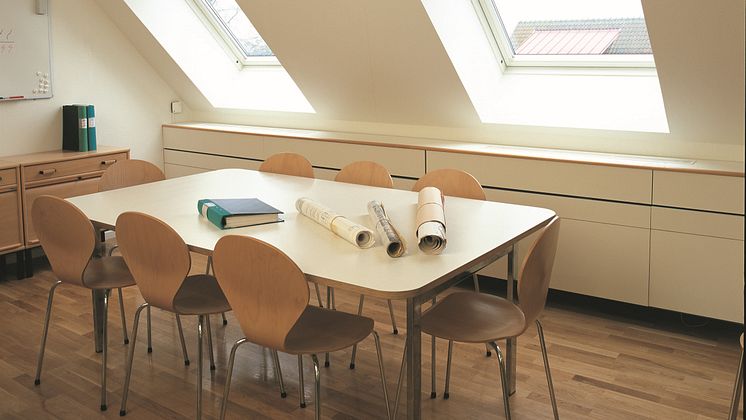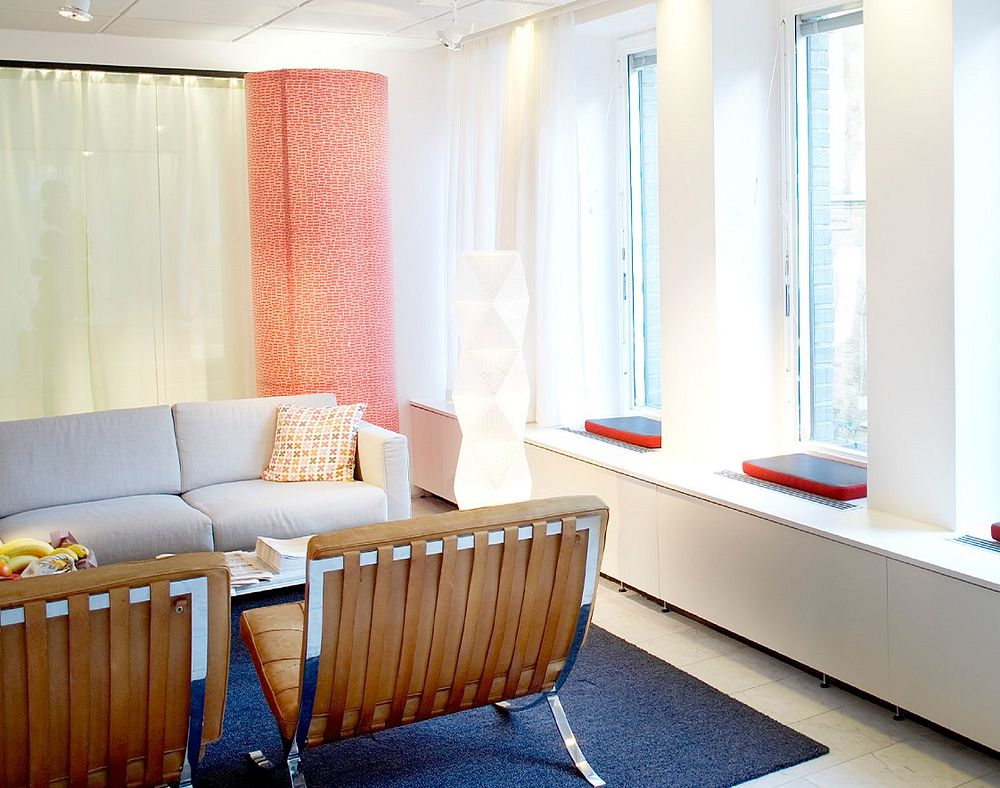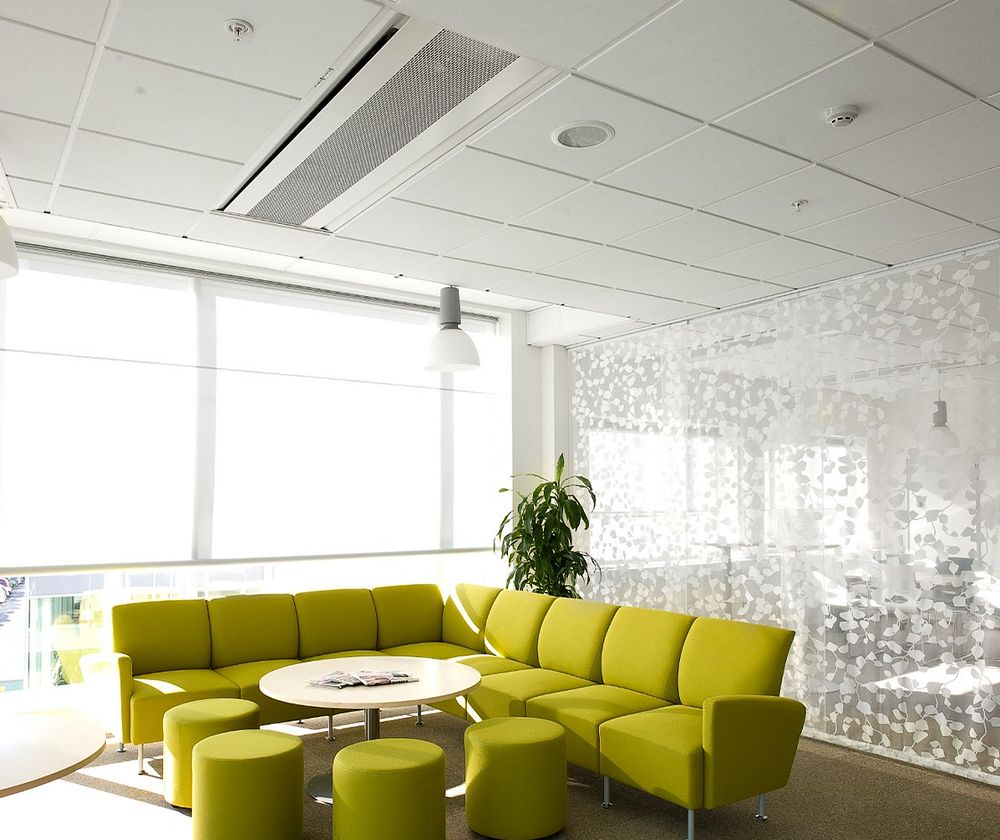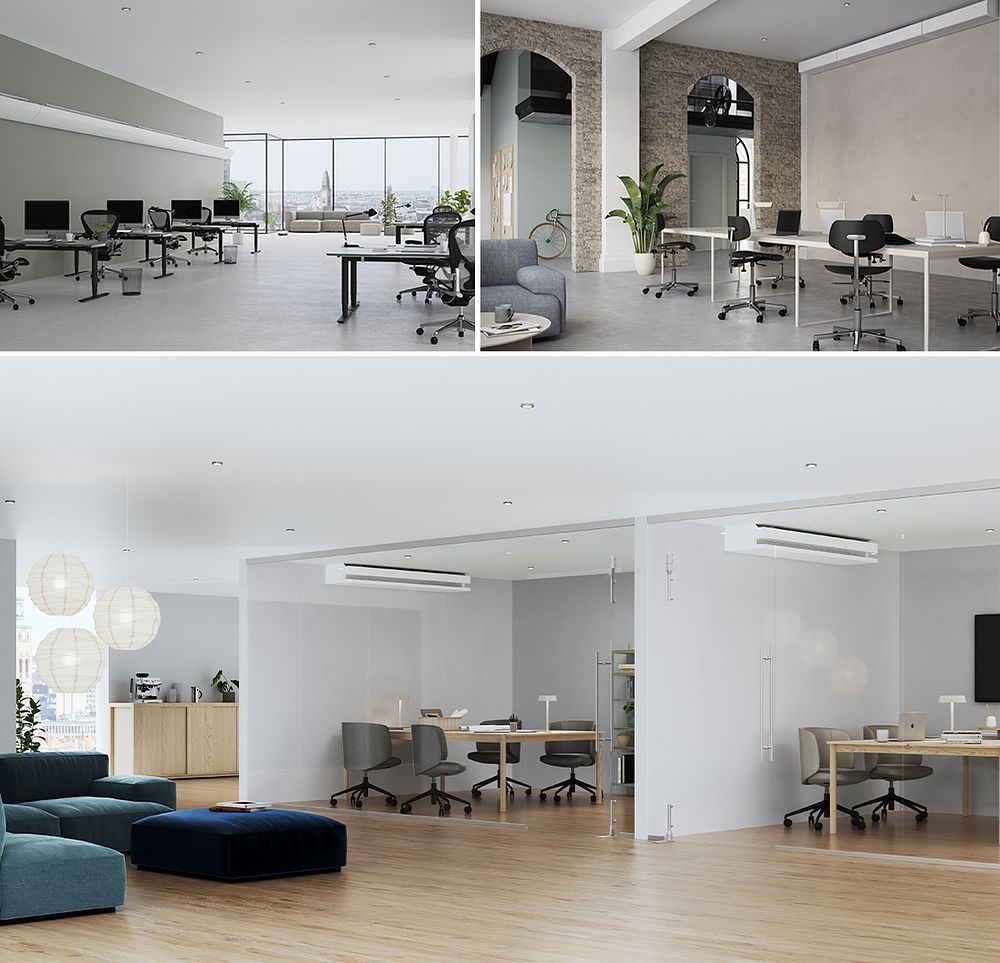How to manage aging HVAC induction systems

Ventilation and indoor climate systems are constantly evolving to improve indoor air quality and reduce energy use in the building. The latest Plafond XD chilled beam system is an example.
Evolution of indoor climate systems
Perimeter induction units (PIU) were often installed in large buildings between the 1950s and 1990s. They were commonly specified due to being more efficient than all air systems of the period and because they required smaller ductwork and less fan volume/power.
Many of these units were well-maintained and continue to operate today. However, 40-60 years on, many of them are now being considered for replacement. Investors, building owners, facility managers and letting agents are actively considering whether to repair or replace them with new induction units or to completely overhaul the building’s climate infrastructure.
But what are Perimeter induction units?
A perimeter induction unit system works with a central air handling unit which delivers cooled, conditioned primary air to rooms through ducting to bulky wall-mounted terminal units.
Induction units vary from fan assisted or air systems in which, primary air is ducted to a set of calibrated outlets called induction nozzles, creating a venturi effect that induces secondary air from the same room. This secondary induced air is passed over a coil then mixes with the primary air and is returned to the room in a controlled and predictable way. Room temperature is controlled with water coils using two port valves. PIUs can both heat and cool, but most operating in today’s buildings offer only ventilation and cooling.
Why should you replace these tried and trusted systems?
Eventually the PIU will become noisy due to the increasingly high air pressures used when plastic induction nozzles break or, as they are located at the floor, keep getting coated in room dust. Ongoing deterioration eventually leads professional facilities management to explore alternatives.
It must also be noted that floor area used by wall mounted units is wasted. Where a building is commercially let, releasing the floor space by updating the HVAC means that additional floor space can be let, increasing income. Indeed, this can actually significantly shorten the return-on-investment time of any refurbishment.
Stick with what you know
The simplest option is to replace the PIU with a direct replacement. A major advantage of keeping a wall mounted induction system is that the building can be upgraded one floor or even one unit at a time, saving cost and reducing disruption. Lindab Fasadium units are designed for this option.
Even though the technology has improved; they can sometimes be fitted with Demand Control Ventilation equipment; and fan energy efficiency developments mean replacement units can potentially reduce the pressure requirement from 1000 Pa to 200 Pa; few design teams are taking this route. Sticking with a PIU system means accepting the loss of floor space and restricted room layout options, limits aesthetic changes and can hinder façade refurbishment.

What are the alternatives?
A building could be switched to a fan coil system, but that would require installing new ductwork runs, diffusers and plenums with substantial installation depths and condensate drainage systems. This would potentially increase local power requirement and could cause sound issues in exposed systems.
Another option is a ductless split cooling system which uses smaller units indoors and a large unit outdoors. These systems can be energy efficient however the downsides are many. In most cases there is no air exchange with a split system, so separate ventilation would be needed. Regular and frequent maintenance requirements can be expensive and future partitioning of the space is very difficult as specialists are needed for any change. Wall mounted units can be unsightly and noisy. high temperature differentials often also cause dumping of air increasing risk of draughts and discomfort- all factors which reduce user acceptance. The exterior unit can also produce noise pollution which can be blocked by local planning regulations.
Finally, a chilled beam system which uses ceiling mounted units. There are two kinds of chilled beams, Passive chilled beams and Active chilled beams. Passive chilled beams use convection air movement to cool the space. Active chilled beams use induction providing more cooling capacity and would more commonly be a good replacement for a PIU system. The benefits of a chilled beam system are many; efficiency means less energy consumption, lower running costs and smaller ductwork requirements. Low noise levels and reduced risk or draught increase indoor comfort. In addition, they can easily be integrated into any room design, without taking up floor or wall space. Lindab have a wide range of chilled beams solutions.

Future-proofing your upgrade
Based upon the active chilled beam principle, Plafond XD is a next-generation climate system utilising induction technology that is far more efficient and quieter than those of previous generations, and design aesthetics haven’t been overlooked.
Plafond XD can be mounted on the ceiling, on any internal wall and partition or above glazing on façade walls. Not only does this free up floor space, it can be used to manage potential overheating from large glazing, partitioning points are maintained, ceilings if installed, can be raised or eliminated. Spaces can easily be repartitioned or re-zoned in future.
In new-build scenarios, Plafond XD provides an opportunity to reduce the height of a building whilst keeping the same number of floors. The reduced dimensions of Plafond XD are extraordinary: giving ventilation, cooling and heating in an installed height of under 350mm.
The beam has been constructed cleverly with the outer cover, able to detach from the inner functioning unit. Seven design styles are available for the cover along with the ability to adapt the beam to include lighting, public address, sprinklers, different colours and materials means that a space can truly be customised to provide client-led solutions for ever-changing building use.

An increase in building refurbishment means a need to replace legacy induction systems and short-lived fan powered options. Regardless of which system is selected, by upgrading a HVAC system, the owners and the users of buildings will enjoy the benefits of the industry’s continual quest for improvement- long may it continue!
Find out more about Lindab Plafond XD.
Contacts:
Indoor Climate Solutions Product Manager
Lindab Ltd.
